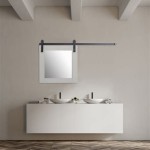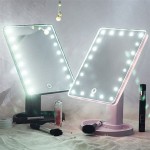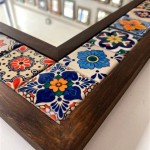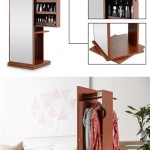Black Spots on Bathroom Mirrors
Black spots appearing on a bathroom mirror can be a frustrating and unsightly problem. These spots, often appearing as small, dark blemishes or larger, spreading patches, indicate deterioration of the mirror's reflective backing. Understanding the causes, prevention methods, and solutions for this issue can help maintain the aesthetic and functional integrity of bathroom mirrors.
Causes of Black Spots
The primary cause of black spots on bathroom mirrors is the degradation of the reflective silver layer behind the glass. This layer is typically protected by a copper layer and a layer of paint, but prolonged exposure to moisture and other environmental factors can compromise these protective barriers. When moisture penetrates these layers, it oxidizes the silver, resulting in the characteristic black spots.
Several factors contribute to this process. High humidity levels in the bathroom, common after hot showers or baths, create a conducive environment for moisture penetration. Inadequate ventilation exacerbates the problem by trapping the moist air against the mirror surface. Additionally, cleaning the mirror with harsh chemicals or abrasive materials can scratch the protective layers, making the silver more vulnerable to oxidation.
Another contributing factor can be the quality of the mirror itself. Lower-quality mirrors may have thinner or less effective protective layers, making them more susceptible to damage and black spot formation. The age of the mirror also plays a role, as older mirrors are naturally more prone to wear and tear.
Preventing Black Spots
Preventing black spots from forming on a bathroom mirror involves minimizing moisture exposure and protecting the mirror's reflective backing. Proper ventilation is crucial. Running an exhaust fan during and after showers and baths helps to remove excess moisture from the air, reducing the likelihood of condensation on the mirror.
Applying a protective sealant to the edges of the mirror can further prevent moisture infiltration. This sealant acts as a barrier, preventing water from seeping between the glass and the protective layers behind it. Regularly wiping down the mirror after showers or baths with a soft, dry cloth also helps to remove any condensation before it can cause damage. Avoiding harsh cleaning chemicals and using a gentle mirror cleaner specifically designed for bathroom use can also help maintain the integrity of the protective layers.
Choosing a high-quality mirror initially can also contribute to long-term prevention. Look for mirrors with thicker, more durable protective coatings, which offer greater resistance to moisture and wear. While these may be a higher initial investment, they can save money in the long run by reducing the need for replacements.
Addressing Existing Black Spots
Once black spots appear, addressing the issue often requires professional resilvering or replacing the mirror. Resilvering involves removing the damaged backing and applying a new reflective coating. This process can restore the mirror's reflectivity, but it can be costly and may not be feasible for all mirrors. In some cases, depending on the extent of the damage, resilvering might not be a successful solution.
For smaller, isolated spots, a temporary solution might involve using a specialized mirror repair kit. These kits usually contain a compound that can be applied to the affected areas to conceal the spots. However, this is generally a cosmetic fix and does not address the underlying issue of the damaged reflective layer. It may provide a temporary improvement in appearance, but the spots are likely to reappear over time.
Ultimately, replacing the mirror is often the most practical and effective solution for extensive black spot damage. While this involves a higher upfront cost compared to other methods, it ensures a long-term solution and restores the aesthetic appeal of the bathroom. When replacing a mirror, consider opting for a higher-quality option with better protective coatings to minimize the risk of future black spot formation.
Taking preventative measures and addressing the issue promptly can help maintain the clarity and longevity of bathroom mirrors, avoiding the frustration and unsightliness of black spots.

Black Spots On A Mirror Why It Happens And What To Do

How To Avoid Black Spotting On Mirrors Adp

Black Spots On A Mirror Why It Happens And What To Do

Repair Or Replace Desilvering Bathroom Mirror Solution For Black Edges

Get Rid Of Dark Spots On Frame Bathroom Mirror Hometalk

How To Repair Desilvering What Do About Black Edges On Mirrors

Fixing Black Spots On Mirrors How To Clean Mirror Diy Projects Old

Black Spots On A Mirror Why It Happens And What To Do

Fixing Black Spots On Mirrors How To Clean Mirror Frame Diy Fix A

Mirror Repair Get Rid Of Black Spots S Haye Plumbing








